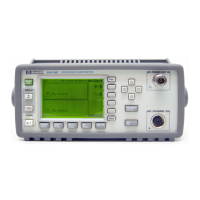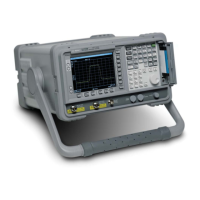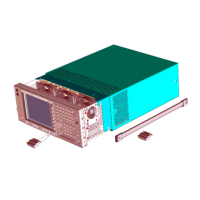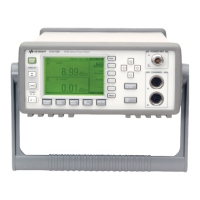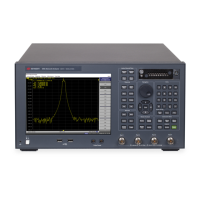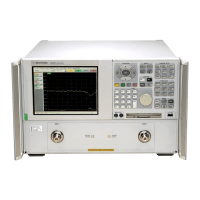Chapter 1 27
Introduction and Measurement Theory
Cable Impedance and Structural Return Loss Measurement Theory
repeatability, or noise floor in the network analyzer will limit the result to between
−60 to −40 dB. If the result is better than −49 dB, then the system repeats better than
the load specification for the best available 75 ohm loads. Thus, the effective
directivity should be taken to be the load spec of −49 dB. It is possible to reduce this
limitation by having loads certified for better return loss.
Measurement Uncertainty for Impedance Measurements
The fixed bridge method calculates the cable impedance by averaging the
impedance of the cable over frequency. The variable bridge uses a reading of the
impedance from the dial on the bridge. The directivity at any impedance can be
determined, as stated earlier, but only to the limit of the return loss of the load, and
the system repeatability.
Table 7-1 on page 89 shows the effect of directivity on
cable impedance measurement uncertainty.
Any connectors and adapters used to connect the test-lead cable to the cable under
test can have a significant effect on the impedance measurement. With the variable
bridge method, the operator determines the appropriate setting, taking into account
the capacitive tuning adjustment. With the fixed bridge method, it is also possible to
compensate somewhat for the connector. However, it is often the case that the cable
impedance is determined by the low frequency response, up to perhaps 200 MHz to
500 MHz, where the connector mismatch effects are still small. The choice of
frequency span to measure cable impedance can itself affect the value obtained for
cable impedance. In general, as the connector return loss becomes worse, it will
have a greater effect on the resulting impedance measurement. The uncertainty
caused by the connector is difficult to predict, but large errors could occur if the low
frequency return loss is compromised to achieve better high frequency structural
return loss.
Finally, note that since both methods average, in some way, the measurement over
the entire frequency range, it is probable that the worst case error will never occur at
all frequencies, and with the same phase. In fact, it is more likely that the errors will
cancel to some extent in cable impedance measurements. Also, the loads that are
used will invariably be somewhat better than specified, especially over the low
frequency range. From this, it is reasonable to assume that the errors in impedance
measurements are at least 50% less than listed in
Table 7-1 on page 89.
Measurement Uncertainty for Structural Return Loss
The same factors that affect cable impedance — directivity, system and test lead
stability, and cable connector mismatch — also affect structural return loss.
However, since structural return loss is measured at all frequencies, it is much more
likely that a worst case condition can occur at any one frequency. For that reason,
the measurement uncertainty must include the full effect of the above listed errors.
